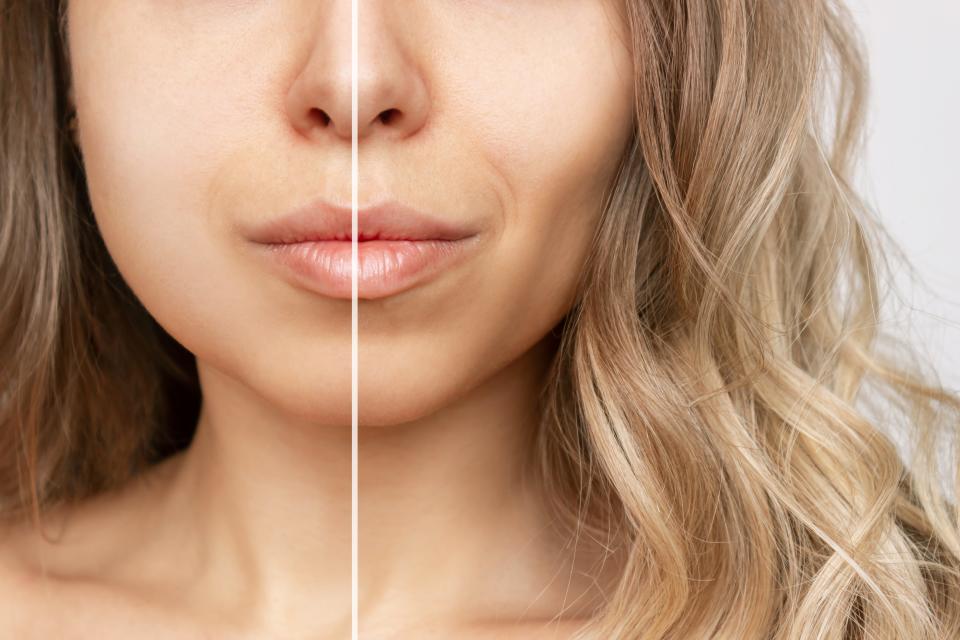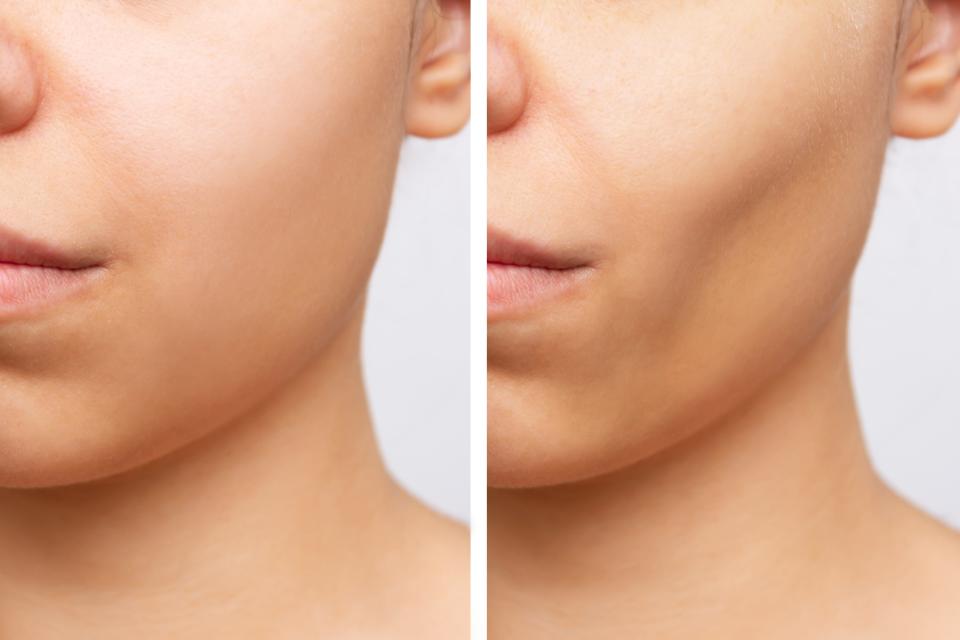'Buccal fat removal': Who decided round cheeks were something to be insecure about?
On TikTok, millions are being exposed to homogenous images of what modern beauty is supposed to be. Instead of round full faces, we're now seeing chiseled jawlines. Hollowed cheekbones. Defined chins.
"A common beauty goal is to mimic a fashion model look," Dr. Steven Pearlman, a board-certified facial plastic surgeon, says about the latest fad. "Models tend to have high cheekbones and narrow sculpted cheeks. Makeup artists spend a lot of time contouring or demonstrating on social media how to contour under the cheekbones for this sculpted look."
However, not everyone can attain this angular appearance naturally, which is why many are turning to plastic surgery to remove their "buccal fat," located in the lower cheek and jaw area.
If you hadn't heard of buccal (pronounced "buckle") fat until now, you're not alone. Expectations for beauty are becoming more and more niche, and even psychologist Elizabeth Daniels, who has been studying body image for over two decades, wasn't aware such a particular body part existed.

"It's interesting that something as specific as the fat laid under our cheekbones needs to be altered to meet a beauty standard," says Daniels, an associate professor of Developmental Psychology at the University of Colorado Colorado Springs.
The surgery is nothing new: Model Chrissy Teigen jumped on the trend in October 2021. But a recent photo of Lea Michele sparked social media interest in the cosmetic procedure. Michele has not commented on speculation about her appearance.
It's a stark contrast from the previous trend of fuller cheeks popularized by injectable fillers, but the ever-changing standards of beauty are no surprise.
"We see these messages about beauty that are pretty narrow and repeated and unattainable, and this prevalence is what regularly exposes people to new insecurities."
Natalia Dyer: That controversial TikTok and when cosmetic 'advice' backfires
So what is 'buccal fat'?
Buccal fat refers to the natural fat tissues in the midface and lower face, responsible for the rounded soft jaw shape. Functionally, it serves as a cushion between two of the chewing muscles: the buccinator and masseter muscles.
Removing it through surgery, which takes approximately one hour, is purely cosmetic, resulting in a slimmer, more chiseled appearance for many. A surgeon will create "a small incision inside the cheek, below the saliva duct… for the buccal fat pad to be gently teased out into the mouth," Pearlman describes.

Social media is a large driver of its sudden popularity, as more and more users are documenting their experience and results – without properly warning about the dangers and caveats of a permanent procedure.
The obsession with creating a "narrower, slimmer silhouette" may also stem from "selfie culture," in which people are constantly staring at a distorted reflection of the way they look.
"When you're kind of cropped in or zoomed in on the face, it makes sense that one would alter their face in a specific way, in a way that seems trendy," Daniels says, likening the buccal fat removal look to a "duck face."
Is 'skinny' making a comeback?: Pilates, low-rise jeans and the Kardashian weight loss
What social media, influencers aren't telling you about buccal fat removal
Unlike lip fillers or BBLs, buccal fat removal is not reversible – a cause for concern as more young people are opting for the controversial plastic surgery.
"As we age, we tend to lose midface volume," Pearlman explains. "So if this is reduced at too young an age, you might look too gaunt and advance the aging appearance of your face."
'They're deadly': I'm a plastic surgeon who won't perform Brazilian Butt Lifts.
For this reason, Pearlman says he only performs buccal fat removal for patients above the age of 30. But on TikTok, some as young as 21 are documenting the procedure for millions to see.
Possible albeit "rare" complications, Pearlman says, include prolonged post-operative swelling, hematoma, muscle weakness and rarely but not unheard of, damage to the saliva duct if the incision is too high.
"People at 19, 20 years old don't have the full brain development to really think about all the possible side effects and long-term effects of getting this procedure now," Daniels warns. "The fact that even teens are getting a permanent procedure in pursuit of a beauty standard does concern me."
Bella Hadid regrets nose job at 14: How young is too young for plastic surgery?
It's buccal fat removal now. But 'what's next?'
In the age of social media, it's hard to resist the new wave of insecurities that we didn't know we were supposed to have. Look at BBLs marketed toward those who weren't born with wide hips and a small waist. Or fillers posing as solutions for what TikTok called a "gummy" smile. And now, buccal fat is taking over social media.
These endless cosmetic options are often advertised as ways to achieve society's definition of "perfection." The reality is that beauty ideals, constantly evolving yet always unattainable, "often profit off of dissatisfactions" by creating more imperfections to constantly improve.
"What's next?" asks Daniels. "Is it going to be a cuticle on your pinky toe? This all goes to show that nothing, no body part, is out of the question."
Glute pumping, lip plumping: TikTok trends insist the body is always something to improve. At what cost?
This article originally appeared on USA TODAY: 'Buccal fat removal' is the latest controversial plastic surgery trend
